 CHAPTER 1
CHAPTER 1
Murder not then the fruit within my womb
Shakespeares Joan, Foxes Guernsey Martyr, and Women Pleading Pregnancy in English History and Culture
Joan Pleads Pregnancy in 1 Henry VI
In Shakespeares play 1 Henry VI Joan La Pucelle is the driving force of the French victories for much of the action. Her English enemies find her frightening and horrifying. While fighting Joan, Lord Talbot says to her, Thou art a witch (1.6.6) and later refers her to as Pucelle, that witch, that damned sorceress (3.2.37). He also questions her morality, describing her as puzzel (1.5.85), which in the Elizabethan period meant slut. When Joan, having been captured, is brought before the Earl of Warwick and the Duke of York to be condemned at the end of the play, she at first denies her shepherd father and proclaims both her noble birth and her virginity. She claims that she is issue from the progeny of kings;/virtuous and holy and adds proudly, Joan of Arc hath been a virgin from her tender infancy/Chaste and immaculate in very thought (5.4.3839, 5051).Arguing that it is warrente[d] by law... [as a] privilege Joan claims, I am with child, ye bloody homicides:/Murder not then the fruit within my womb (6365). But York and Warwick refuse to listen, damning the child for each of its potential fathers as the desperate Joan names one man after anotherthe Dauphin, Alenon, Reignier. Joan is sent away to be burned, and her last words on stage are her curse to the English. It is important to be explicit: this is Shakespeares character Joan, not the historical fifteenthcentury person, and Shakespeare has this character Joan place saving her life, an attempt that proves futile, above honor and historic glory.
The thought of a pregnant woman being executed is an unsettling one. But though York and Warwick mock Joan once she asserts that she is pregnant, stating Strumpet, thy words condemn thy brat and thee (5.4.84), what she demands would actually be hers by right of law in the sixteenth-century Britain in which Shakespeare composed his history play. Many women convicted of capital crimes pleaded pregnancy, and this was one method that kept a number of sixteenth-century women who had been found guilty from being executed.
In this chapter I examine the character Joans plea within the context of actual women pleading pregnancy to avoid execution in Elizabethan England and Scotland. Pleading pregnancy was a familiar part of the justice system in England in the medieval and early modern period.the Channel Islands, as John Foxe makes evident in the especially barbarous treatment of Perotine Massey and her infant son.
In these cases, the boundaries between law and compassion get confused and moved back and forth because of the sixteenth-century crises of nationbuilding as portrayed both in drama and religio-political actualities. While in the 1590s Shakespeares 1 Henry VI looks back at the remembered crisis of the Hundred Years War and paints Joan as a woman who uses sorcery to aid the national enemy, in the 1550s Perotine Massey was actually, and illegally, burned as a heretic as Mary I attempted through religious restoration to reclaim the English nation as Catholic. While we might believe that the law ought to apply to everyone, in sixteenth-century England, class played an extensive role in both convictions and type of executions. Men, theoretically only clerics but often any man who was literate, could also plead benefit of clergy; if a woman sentenced to die could show that she was pregnant, she might just escape her fate. Examining the actual cases lends insight into how Shakespeares audience might have responded to the character Joan, and how womenfictional and actualrelated to oppressive state regimes.
Though we in the early twenty-first century may be appalled by the idea of the violent death of a pregnant woman, in early modern England such a death might be perceived as a just punishment for a woman who so visibly stepped beyond the boundary of appropriate behavior. For Elizabethans, Joan, a French woman dressed in masculine attire who consorted with demons, was clearly an uncomfortable, transgressive character. By the sixteenth century, Joan was known as La Pucelle, almost as a surname. That very title could mean either virgin or slut, the latter meaning first arising in the 1570s. In the same century the word quean, which originally meant simply woman or female, came to mean a bold or impudent woman; a hussy; spec. a prostitute. That the word sounds the same as queen, a woman who rules, only adds to the complexity.
As Leah Marcus argues, Joans crossing of the gender boundaries marking men off from women threatens a whole set of cultural polarities by which the categories were kept distinct. Marcus sees Joan as a fractured image of Elizabeth, a point also made by Barbara Hodgdon: Figured remarkably like Elizabeth in many attributes, Joan represents a subversive challenge to gender.... Joan, like the Queen whose ghostly image she echoes, functions as a spectacular, and intensely troubling, site of gender display.
Pope Joan
Another figure who stands behind Joan la Pucelle is the other Joan, Pope Joan. In the twenty-first century, most scholars recognize her to be a legendary character, but many in the sixteenth century believed that she had actually existed centuries earlier. This medieval legend also contained religious overtones that used cross-dressing and suggested demonic relations. For sixteenth-century English Protestants such as John Foxe, Pope Joan was another example not only of the waywardness of women but also of the contemptible nature of Catholics, since they to the perpetual shame of them... instead of a man pope elected a whore indeed to minister sacraments, to saye masses, to geve orders.
All might have continued well for this remarkable woman but for her sexual appetite. One of the members of her papal retinuea servant, a chamberlain, even a cardinal, depending on the versionreminds Joan of her dead lover. Soon Joan is all too consoled. Her papal robes hide her pregnancy until, at the most dramatically inopportune moment, she gives birth in the middle of a formal procession in the streets of Rome. It is her pride that undoes her: she had insisted on leading this procession even though she had known she was near her time. In some versions, the Roman mob, furious at the deception, immediately tears her and her infant son to death. Other versions report the authorities hanging her and her child in order to demonstrate her shame. A sixteenth-century German play has Lucifer narrate the story of Pope Joan. At the beginning of the play, he promises her intellect and fame, but at the end she is betrayed to the Roman mob by another devil, who spitefully announces: The Pope is great with child. He is a woman and no man. Sixteenth-century versions of Pope Joan and Joan of Arc both use the issue of pride and illicit (possible) pregnancy as the way to bring the characters to destruction.
English Views of Joan of Arc
Just as the character of Pope Joan would have been well known to Elizabethans, so, too, would Joan of Arc. Both were portrayed in histories written in the sixteenth century; in the second half of the century there was, argues D. R. Woolf, an enormous expansion of public interest in the past. Joans plea, echoing the pleas of actual women in the courts, would have been heard by many playgoers.
In the world of the play of 1 Henry VI one might wonder if Joan is indeed pregnant. At the beginning of the play she cautions the Dauphin that she cannot think about love while it is her duty from the Virgin Mary to expel the English: I must not yield to any rites of love, For my professions sacred from above: When I have chased all thy foes from hence, Then will I think upon a recompense (1.2.11316). Although Joan and Charles do enter together in Act II, scene 1, when they flee Rouen in the middle of the night and the English later refer to her paramours, there is no explicit evidence that Joan has taken any lovers, much less that she is pregnant.
Next page
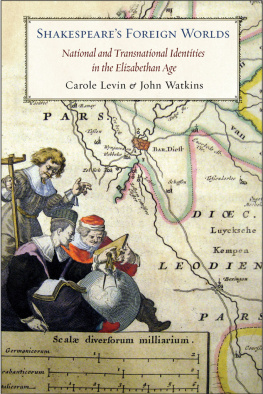
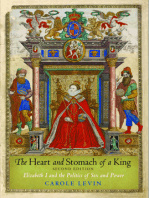
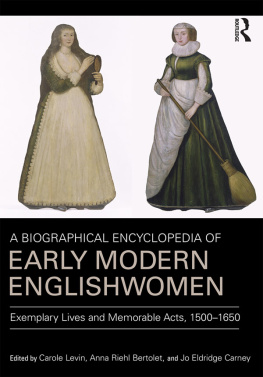

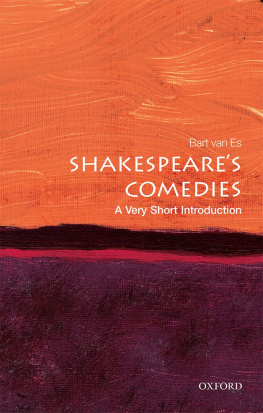

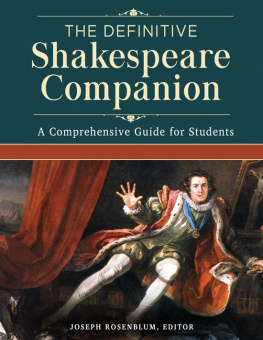
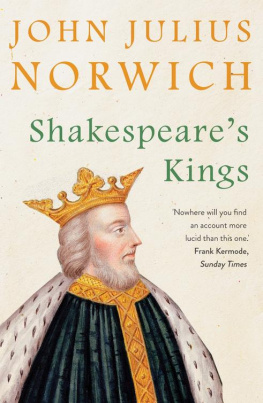
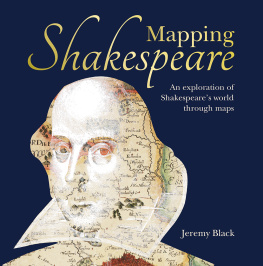
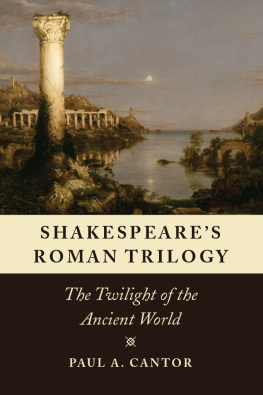
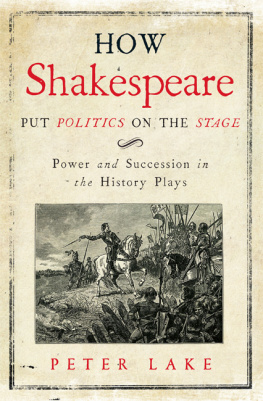

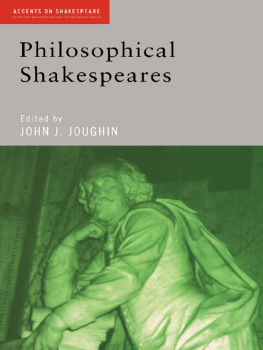

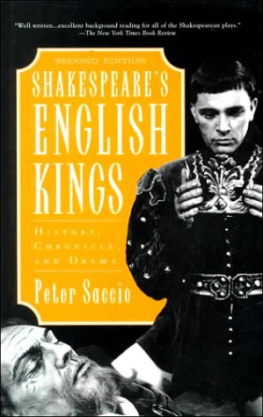
 CHAPTER 1
CHAPTER 1